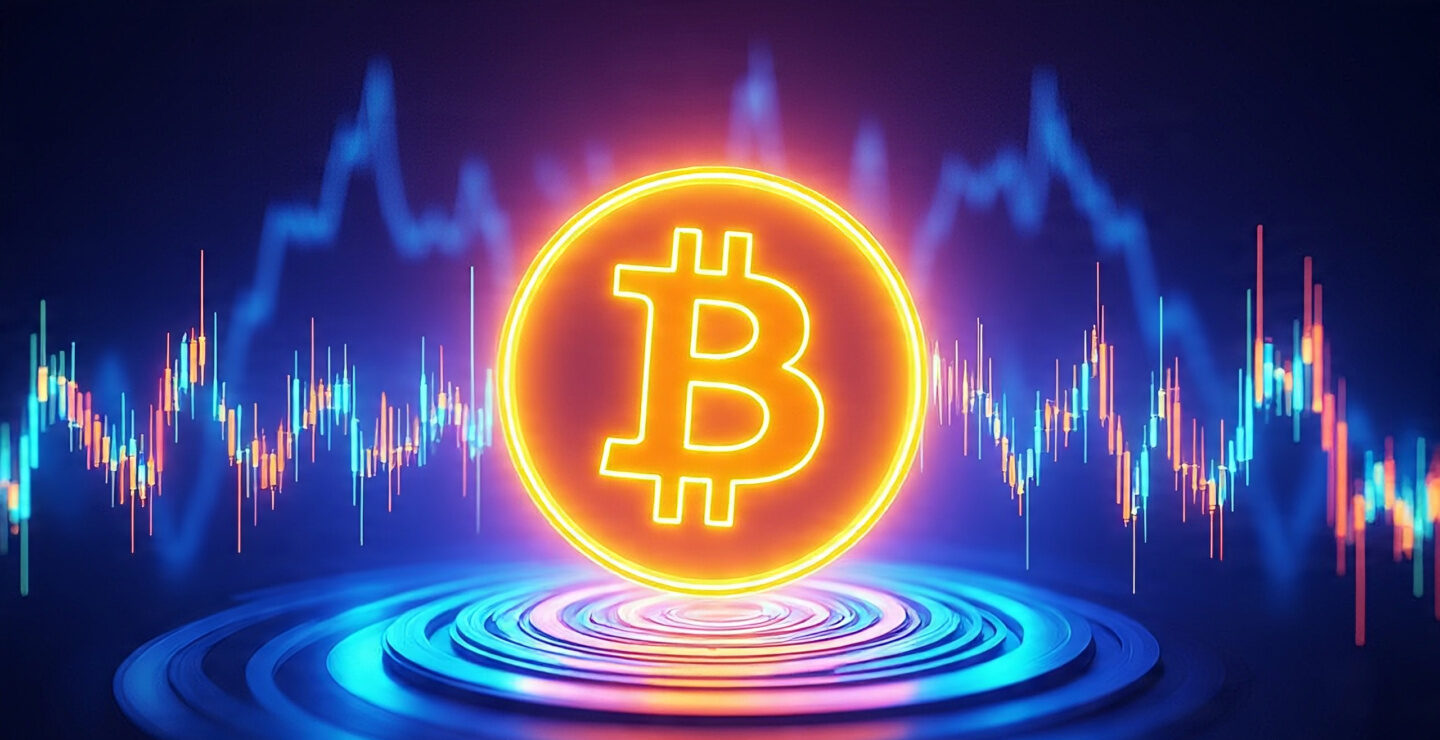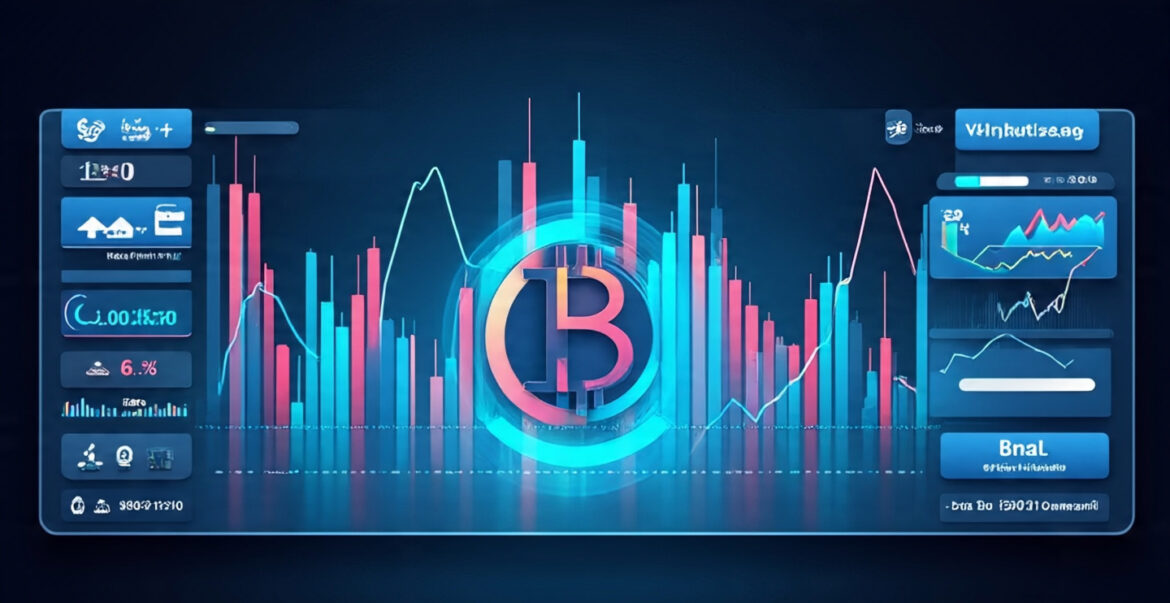In the fast-paced world of cryptocurrency trading, timing is everything. Whether you’re a seasoned trader or just starting your Bitcoin journey, having access to real-time Bitcoin price alerts can mean the difference between catching a profitable trade and missing out on significant market movements. With Bitcoin’s notorious volatility, prices can swing dramatically within minutes, making instant notifications absolutely crucial for your trading success.
The cryptocurrency market operates 24/7, unlike traditional stock markets, which means opportunities and risks can emerge at any hour. Without proper alert systems in place, you might wake up to find that Bitcoin has moved 10% overnight, either in your favor or against your position. This comprehensive guide will walk you through everything you need to know about setting up effective real-time bitcoin price alerts that will keep you informed and help you make better trading decisions.
Why Real-Time Bitcoin Price Alerts Are Essential for Traders
The volatile nature of Bitcoin makes it one of the most exciting yet challenging assets to trade. Price movements of 5-15% in a single day are not uncommon, and these fluctuations create both opportunities and risks that require immediate attention. Real-time bitcoin price alerts serve as your digital watchdog, monitoring the market 24/7 so you don’t have to.
Professional traders understand that emotion often drives poor decision-making in the markets. When you’re constantly watching price charts, it’s easy to make impulsive trades based on fear or greed. However, when you set up strategic price alerts, you can step away from the charts and only engage with the market when your predetermined conditions are met. This approach leads to more disciplined trading and better overall results.
Market manipulation and sudden news events can cause rapid price movements that happen within seconds. Major announcements from regulatory bodies, institutional adoptions, or significant market events can trigger massive buying or selling pressure. Without real-time alerts, you might miss these critical moments when quick action could protect your portfolio or capitalize on opportunities.
The global nature of cryptocurrency markets means that significant price movements can occur while you’re sleeping, working, or otherwise occupied. Asian markets might drive a rally while American traders are asleep, or European regulations might impact prices during US trading hours. Real-time bitcoin price alerts ensure you’re always connected to the market, regardless of your time zone or daily schedule.
How Real-Time Bitcoin Price Alerts Work
Real-time Bitcoin price alerts operate through sophisticated monitoring systems that continuously track Bitcoin’s price across multiple exchanges and trading platforms. These systems use API connections to receive instant price feeds from major exchanges like Binance, Coinbase, Kraken, and others, ensuring that you receive notifications based on the most current market data available.
The technology behind these alerts involves complex algorithms that process thousands of data points per second. When you set a specific price threshold, the system continuously compares the current market price against your target. The moment your condition is met, whether it’s a price increase, decrease, or specific percentage change, the alert system immediately sends you a notification through your chosen communication channel.
Most professional alert systems offer multiple trigger options beyond simple price thresholds. You can set alerts for volume spikes, technical indicator signals, percentage changes over specific time periods, or even complex multi-condition scenarios. This flexibility allows you to create a comprehensive monitoring system tailored to your specific trading strategy and risk tolerance.
The notification delivery methods have evolved significantly, ranging from simple email alerts to push notifications on mobile apps, SMS messages, Discord or Telegram bots, and even integration with trading platforms for automated responses. The key is choosing delivery methods that ensure you’ll actually receive and act on the alerts when they trigger.
Best Platforms for Real Time Bitcoin Price Alerts

Professional Trading Platforms
TradingView stands out as one of the most comprehensive platforms for real-time bitcoin price alerts. Their advanced charting tools allow you to set sophisticated alerts based on technical indicators, trend lines, and custom conditions. The platform aggregates data from multiple exchanges, giving you a comprehensive view of Bitcoin’s price action across the market. Their alert system can notify you via email, mobile app, or browser notifications, and premium users can set unlimited alerts.
CoinMarketCap offers robust alert features that go beyond simple price notifications. You can set percentage-based alerts, track multiple timeframes, and receive notifications about significant market cap changes. Their platform is particularly useful for monitoring Bitcoin’s dominance in the overall cryptocurrency market and comparing its performance against other digital assets.
Mobile-First Solutions
Blockfolio (now FTX App) provides excellent mobile-centric alert features designed for traders who prefer managing their portfolio on the go. The app offers customizable push notifications, portfolio tracking, and news integration, allowing you to stay informed about both price movements and market-affecting news events. Their alert system is particularly user-friendly for beginners while still offering advanced features for experienced traders.
Crypto.com’s mobile app includes sophisticated alert features integrated with its exchange and wallet services. Users can set price alerts, percentage change notifications, and even alerts for specific trading volumes. The integration with their ecosystem makes it convenient for users who already trade on their platform.
Exchange-Based Alerts
Binance offers native alert features within its trading platform, allowing users to set notifications directly where they execute trades. This integration is particularly valuable because alerts can trigger automated trading actions through their API, enabling advanced users to create semi-automated trading strategies. Their system supports complex conditional orders that act on price alerts.
Coinbase Pro provides professional-grade alert features suitable for institutional and high-volume traders. Their system offers high reliability and low latency, crucial for time-sensitive trading decisions. The platform’s alerts can be integrated with their advanced order types, creating sophisticated trading strategies that execute automatically when conditions are met.
Setting Up Effective Real-Time Bitcoin Price Alerts
The key to effective alert setup begins with defining your trading strategy and risk management approach. Before creating any alerts, determine your entry and exit points, stop-loss levels, and profit targets. This strategic planning ensures that your alerts serve a specific purpose rather than becoming noise that leads to alert fatigue.
Start with broad alerts to understand Bitcoin’s normal price behavior patterns. Set initial alerts at significant psychological levels like round numbers ($40,000, $50,000, $60,000) or major technical support and resistance levels. These broad alerts help you develop a feel for the market’s rhythm and typical volatility patterns.
Gradually refine your alerts based on your observations and trading results. If you find that 2% price movements are too frequent and causing alert fatigue, adjust to 3-5% thresholds. Conversely, if you’re missing important movements, consider adding more granular alerts or using shorter timeframes for your percentage-based triggers.
Consider setting up layered alert systems with different notification methods for different priority levels. Critical alerts that require immediate action might warrant SMS or phone call notifications, while informational alerts could use email or app notifications. This tiered approach ensures that truly important movements get your immediate attention while reducing overall notification noise.
Test your alert system thoroughly during low-stakes periods to ensure all notifications are working correctly and reaching you through your preferred channels. Nothing is worse than discovering your alert system failed during a critical market movement. Regular testing and maintenance of your alert setup is essential for reliable performance.
Advanced Alert Strategies for Bitcoin Trading
Technical analysis-based alerts represent the next level of sophistication in Bitcoin price monitoring. Instead of simple price thresholds, you can set alerts for when Bitcoin breaks through important technical levels like moving averages, trend lines, or Fibonacci retracements. These alerts help you identify potential trend changes or continuation patterns that might not be obvious from price alone.
Volume-based alerts can provide early warning signs of significant price movements. When Bitcoin’s trading volume spikes suddenly, it often precedes major price movements. Setting alerts for unusual volume activity can help you position yourself before the crowd recognizes the emerging trend. Combine volume alerts with price alerts for a more comprehensive market monitoring system.
Multi-timeframe alert strategies involve setting different types of alerts across various time periods. You might have long-term alerts for weekly or monthly trend changes, medium-term alerts for daily movements, and short-term alerts for intraday trading opportunities. This approach provides a comprehensive view of Bitcoin’s price action across all relevant timeframes for your trading style.
Correlation-based alerts monitor Bitcoin’s relationship with other assets like traditional stocks, gold, or other cryptocurrencies. When these correlations break down or strengthen suddenly, it can signal important market shifts. Advanced traders use these alerts to identify broader market trends that might affect Bitcoin’s future price direction.
Managing Alert Fatigue and Optimization
Alert fatigue is a real problem that affects many traders who set up too many notifications or use inappropriate threshold levels. When you receive dozens of alerts daily, you gradually become desensitized to them, potentially missing truly important signals. The key is finding the right balance between staying informed and avoiding information overload.
Start with fewer, higher-quality alerts rather than trying to monitor every small price movement. Focus on alerts that align directly with your trading strategy and have a clear action plan associated with each trigger. If an alert doesn’t lead to a specific decision or action, consider whether it’s truly necessary for your trading success.
Regularly review and adjust your alert thresholds based on changing market conditions. During high volatility periods, you might need to widen your alert ranges to avoid excessive notifications. Conversely, during quiet market periods, tighter alerts might help you catch smaller but still significant movements.
Use time-based filters to prevent alert spam during known volatile periods. For example, if you know that Bitcoin tends to be more volatile during certain hours or after specific events, you can adjust your alert sensitivity accordingly. Some platforms allow you to set different alert thresholds for different times of day or days of the week.
Consider implementing cooling-off periods for your alerts to prevent multiple notifications for the same market event. If Bitcoin triggers a price alert, you might want to pause similar alerts for 30 minutes or an hour to avoid getting bombarded with notifications as the price continues to fluctuate around your trigger level.
Integration with Trading Strategies
Real-time bitcoin price alerts become most powerful when integrated with well-defined trading strategies. Your alerts should serve as triggers for predetermined actions rather than simply informational notifications. This strategic approach helps remove emotion from trading decisions and ensures consistent execution of your trading plan.
Scalping strategies can benefit from very tight price alerts combined with quick execution capabilities. Scalpers might set alerts for 0.1-0.5% price movements and use automated trading systems to capitalize on these small but frequent opportunities. The key is having extremely low-latency alerts and execution systems to compete effectively in this high-frequency environment.
Swing trading strategies typically use broader price alerts focused on significant technical levels or percentage-based movements. Swing traders might set alerts for 3-5% price changes or breaks through important support and resistance levels. These alerts provide entry and exit signals for positions held over days or weeks rather than minutes or hours.
Long-term investment strategies can use alerts to identify major buying or selling opportunities during extreme market conditions. These alerts might trigger when Bitcoin reaches specific valuation metrics, breaks through long-term trend lines, or experiences unusual fundamental developments. The focus is on significant, structural changes rather than short-term price noise.
Dollar-cost averaging strategies can use time-based and price-based alerts to optimize regular purchase schedules. Instead of buying Bitcoin on a fixed schedule regardless of price, alerts can help identify more favorable entry points within your regular investment timeframe, potentially improving your average purchase price over time.
Mobile vs Desktop Alert Management
Mobile alert management offers unparalleled convenience and ensures you stay connected to the Bitcoin market regardless of your location. Smartphone apps can deliver push notifications instantly, allowing you to respond to market movements within seconds of your alert triggers. The always-connected nature of mobile devices makes them ideal for time-sensitive trading alerts.
However, mobile alerts come with unique challenges, including battery drain, notification fatigue, and the potential for distractions during inappropriate times. Managing mobile alerts effectively requires careful consideration of notification settings, quiet hours, and priority levels to ensure important alerts aren’t missed while avoiding constant interruptions.
Desktop alert systems typically offer more sophisticated features and better integration with advanced trading platforms. Desktop applications can display more detailed information, support complex multi-condition alerts, and integrate seamlessly with trading execution platforms. For professional traders managing large portfolios, desktop systems often provide superior functionality.
The optimal approach for most traders involves a hybrid system using both mobile and desktop alerts with different priority levels and notification methods. Critical alerts might trigger both mobile and desktop notifications, while informational alerts might only appear on desktop during trading hours. This layered approach ensures comprehensive coverage while minimizing disruption.
Security Considerations for Price Alert Systems
When setting up upreal-timee bitcoin price alerts, security should be a primary concern given the financial implications of the information you’re monitoring. Choose alert platforms with strong security credentials, including encryption of data transmission, secure API connections, and robust authentication systems. Your alert system becomes part of your trading infrastructure and should meet the same security standards as your exchange accounts.
Avoid alert systems that require excessive permissions or access to your trading accounts beyond what’s necessary for price monitoring. Legitimate alert services should only need read-only access to price data, not trading or withdrawal permissions. Be particularly cautious of services offering “automated trading” features unless you fully understand and trust their security implementation.
Consider using dedicated devices or accounts for your most critical alerts to minimize security risks. Some professional traders use separate phones or email accounts exclusively for trading alerts to prevent security breaches from affecting their primary communication channels. This isolation strategy helps contain potential security incidents.
Regularly update and review the security settings of your alert platforms, including changing passwords, reviewing connected applications, and monitoring account access logs. Security in the cryptocurrency space evolves rapidly, and maintaining current security practices is essential for protecting your trading information and assets.
Common Mistakes to Avoid with Bitcoin Price Alerts
One of the most frequent mistakes traders make is setting too many alerts without a clear action plan for each one. Every alert you create should have a specific purpose and a predetermined response. If you can’t articulate what you’ll do when an alert triggers, it’s probably not a necessary alert and will only contribute to noise and confusion in your trading process.
Another common error is failing to adjust alert thresholds based on changing market conditions. Alert levels that work well during low volatility periods might become useless during high volatility phases, generating either too many false signals or missing important movements entirely. Successful traders regularly review and adjust their alert parameters based on current market characteristics.
Many traders also make the mistake of relying solely on price alerts without considering volume, news events, or broader market context. Price movements without corresponding volume or fundamental catalysts often prove to be false signals. The most effective alert systems combine price triggers with additional confirmation factors to improve signal quality.
Ignoring time zone considerations can lead to receiving important alerts at inappropriate times when you cannot act on them effectively. Consider your trading schedule and sleep patterns when setting up alerts, or use platform features that allow different alert settings for different times of day. Missing critical alerts because they arrived at 3 AM defeats their purpose.
Future of Real Time Bitcoin Price Alerts

The evolution of artificial intelligence and machine learning is beginning to transform price alert systems from simple threshold-based notifications to intelligent predictive systems. Future alert platforms will likely incorporate AI algorithms that learn from your trading patterns and market behavior to provide more sophisticated and personalized notifications.
Integration with voice assistants and smart home devices represents another frontier for price alert delivery. Imagine receiving Bitcoin price alerts through your smart speaker or having your home automation system respond to significant market movements. These integrations could make alert management more seamless and natural.
Blockchain-based alert systems are emerging that offer improved security, decentralization, and transparency compared to traditional centralized platforms. These systems could provide more reliable alert delivery while reducing dependence on centralized service providers that might experience downtime or security breaches.
The integration of social sentiment analysis and news sentiment scoring into alert systems will provide more context around price movements. Future alerts might not only tell you that Bitcoin’s price moved 5%, but also provide immediate context about what news events or social media trends might be driving the movement.
Conclusion
Real-time Bitcoin price alerts represent an essential tool for anyone serious about Bitcoin trading or investment. Whether you’re a day trader looking to capitalize on small price movements or a long-term investor wanting to stay informed about major market shifts, properly configured alerts can significantly improve your market timing and decision-making process.
The key to success lies not just in setting up alerts, but in developing a systematic approach that aligns with your trading strategy, risk tolerance, and lifestyle. Start with basic price threshold alerts to understand the market’s rhythm, then gradually incorporate more sophisticated features like technical analysis triggers, volume alerts, and multi-timeframe monitoring.
Read More: Best Bitcoin Price Prediction Tools 2025 Expert Reviews



